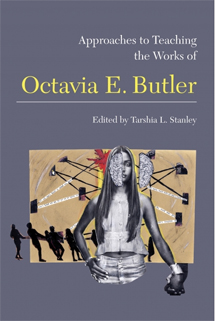Dr. Edmond Chang’s essay “Drawing the Oankali: Imagining Race, Gender, and the Posthuman in Butler’s Dawn” was published in the edited collection Approaches to Teaching the Works of Octavia E. Butler from The Modern Language Association.
 Chang is Assistant Professor of English at Ohio University.
Chang is Assistant Professor of English at Ohio University.
According to Chang, “Octavia Butler’s Xenogensis trilogy—Dawn, Adulthood Rites, and Imago—imagine a post-apocalyptic Earth where humanity has been ‘saved’ by the Oankali, an alien race with the ability to manipulate genetic material. As in most of her science fiction, Butler unflinchingly engages questions of race, gender, sexuality, power, and what it means to be ‘human,'” he says.
Using Butler’s ‘Dawn’ in Class
“Drawing on my courses that feature the first novel in the series, my essay articulates the pedagogical opportunities raised by the Oankali. In particular, I focus on a drawing assignment called ‘Imagining the Oankali’ where students are asked to draw, represent, or create their idea of the aliens as a way to make visible how the novel dramatizes difference and difficult identities and embodiments.”
Chang’s essay is published in the “Approaches” section of Approaches and includes close readings of the novel, examples of drawings, and student reflections on the aliens and on Butler.
Finally, the publication comes just in time for Chang, who is teaching ENG 3390: African American Literature 1930-Present organized around African American science and speculative fictions—including Butler’s Dawn. His ENG 3390 students will get the opportunity to draw their own versions of the Oankali.
About Octavia E. Butler
“Octavia E. Butler’s works of science fiction invite readers to consider the structures of power in society and to ask what it means to be human. Butler addresses social justice issues such as poverty, racism, and violence against women and connects the history of slavery in the United States with speculation on a biologically altered future world,” according to the book’s website.
“The first section of this volume, “Materials,” lists secondary sources and interviews with Butler and suggests texts that instructors might pair with her works. Essays in the second section, “Approaches,” situate Butler in science fiction, modernism, and Afrofuturism and provide interdisciplinary approaches from political science, philosophy, art, and digital humanities. The contributors present strategies for teaching Butler in literature courses as well as courses designed for adult learners, preservice teachers, and students at historically black colleges and universities.



















Comments